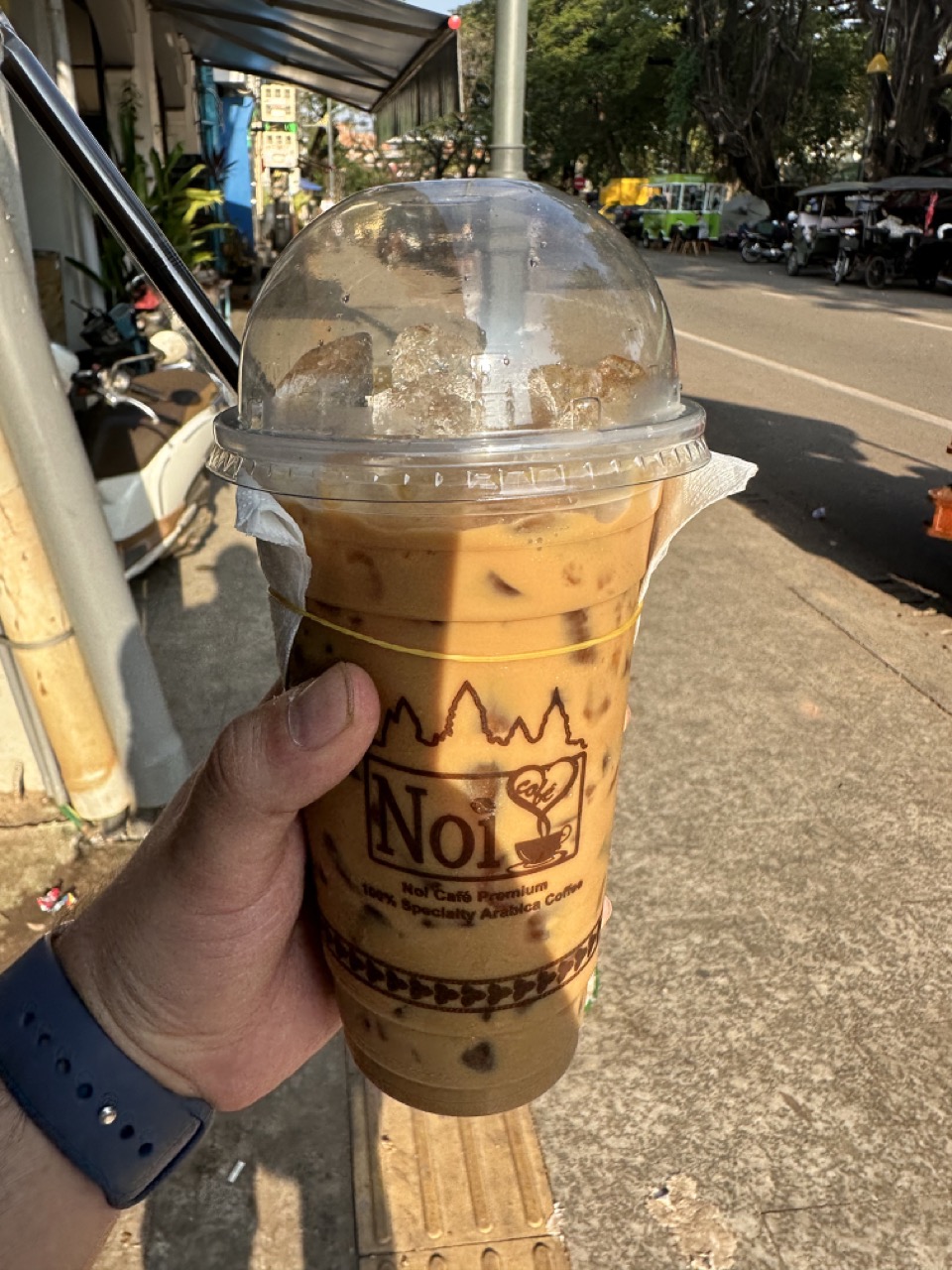Justin Applefield
Siem Reap Part 2: Angkor What? Khmer Who?
January 15, 2023
Today I planned to go to Angkor Wat. In order to watch the sunrise, I had arranged with the hotel for a driver and a tour guide to meet and leave at 5am. I woke up around 4:30am and took a quick shower before heading downstairs. My driver for today, Shwet (definitely spelled wrong, Khmer names are very hard to spell and pronounce for me), was the same driver who had picked me up from the airport yesterday. Waiting outside was also my tour guide, Arn (again, name definitely spelled wrong).
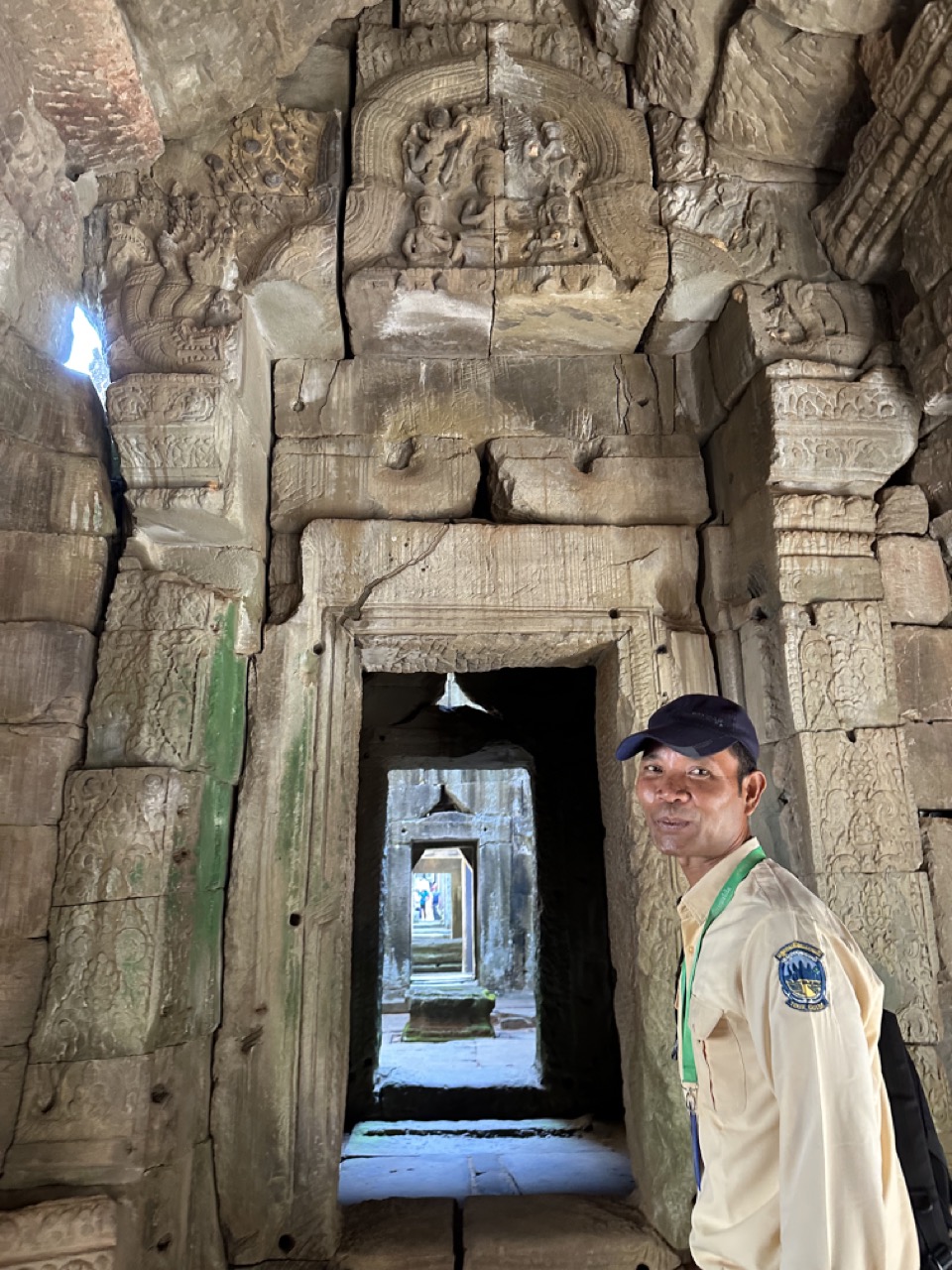
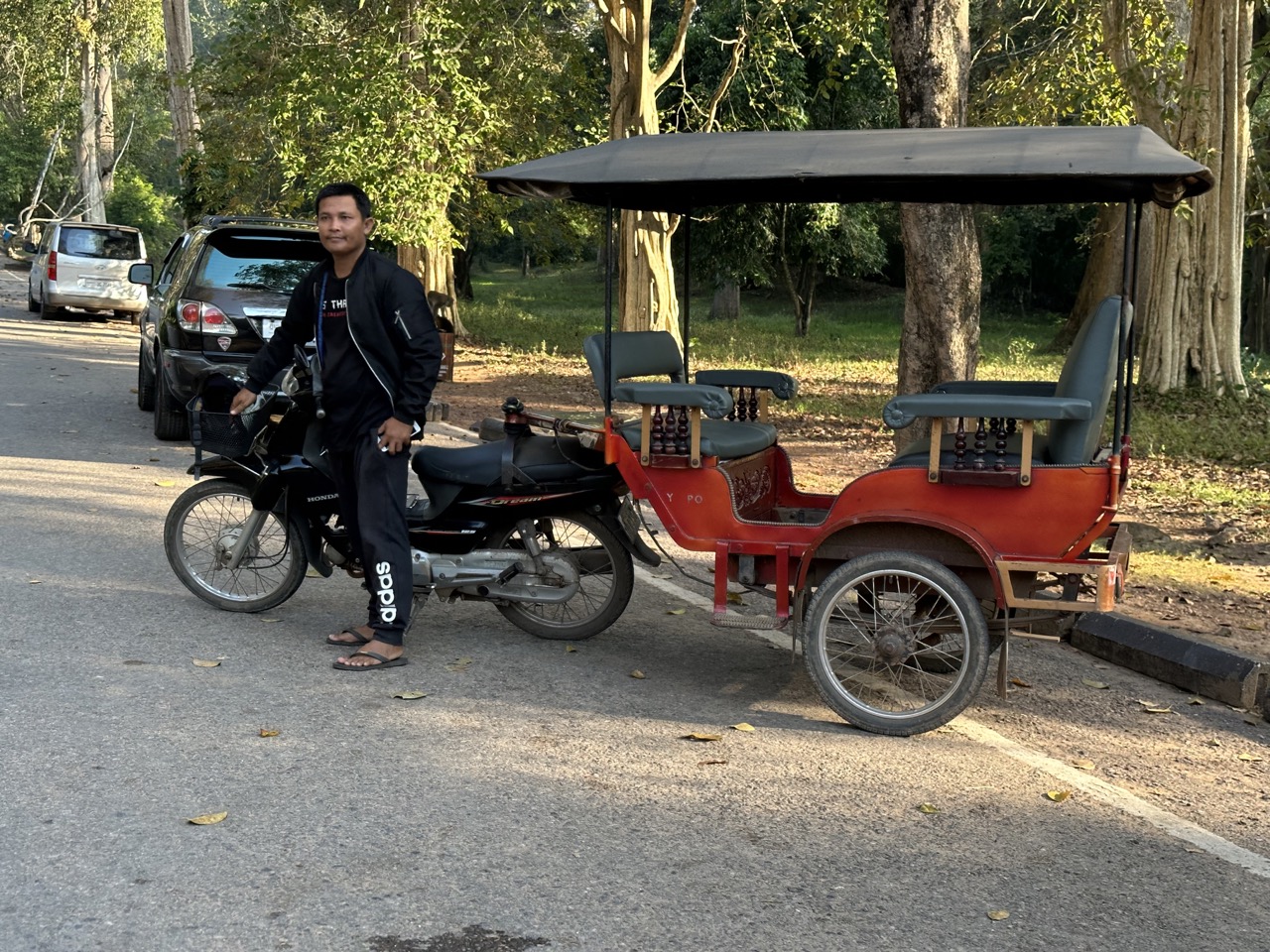
The drive to Angkor Wat took about twenty minutes. Along the way, Arn filled me in on some of the history of Siem Reap and Angkor Wat. (I will try to relate all the history in this blog post as Arn related it to me, so I cannot promise 100% accuracy here). Siem Reap, the city, was inhabited centuries ago by the Khmer Kingdom. The name of the city itself means "Siam defeated," a reference to historical conflicts between the Khmer and the Thai. The internet claims that the Khmer wanted independence from the Thai, but Arn claims that the Thai wanted independence from the Khmer; I'm not sure if this is a translation issue or a nationalism issue. Regardless, Angkor was previously the capital city of the Khmer empire, but was abandoned centuries ago. The ruins of the city became overgrown by the jungle and many buildings were destroyed. In the 19th century the French discovered it and began excavation. Many of the sites inside of Angkor are referred to by the names that local Khmer people used to describe them when the French discovered it, and not the actual historical names. For example, Angkor Wat literally means "City of Temples," but itself is only a single temple. According to Arn, the Angkor area could have been home to a million people, which would make it one of the largest pre-industrial civilizations by population.
A particularly interesting aside: the buildings in Angkor were built by a series of kings who ruled during a time of religious change in the Khmer kingdom. In the 10th century, the Khmer were Hindus and primarily built temples dedicated to Shiva, the destroyer. However, Angkor Wat itself was built by Suryavarman II as a temple dedicated to Vishnu, the preserver. Jayavarman VII, who later constructed many monuments, converted to Mahayana Buddhism. After Jayavarman VII's death, the king Jayavarman VIII converted back to Hinduism. Cambodia today follows Therevada Buddhism.
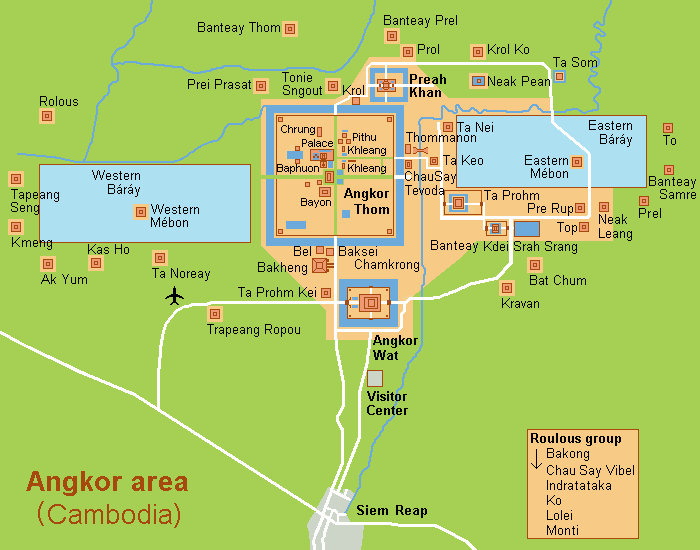
We got out of the tuk tuk and walked across the moat on the west side of Angkor Wat. The actual bridge across the moat is currently under restoration, so we crossed on a temporary floating bridge. It was pitch black, and Arn used the flashlight on his phone to help guide me. We proceeded to the south pool on the west side of Angkor Wat, so we could watch the sun rise over the building. We got there at 5:30, which is the perfect time because the first glimpses of light begin to show around 5:40, with the full sun rising around 6:30.
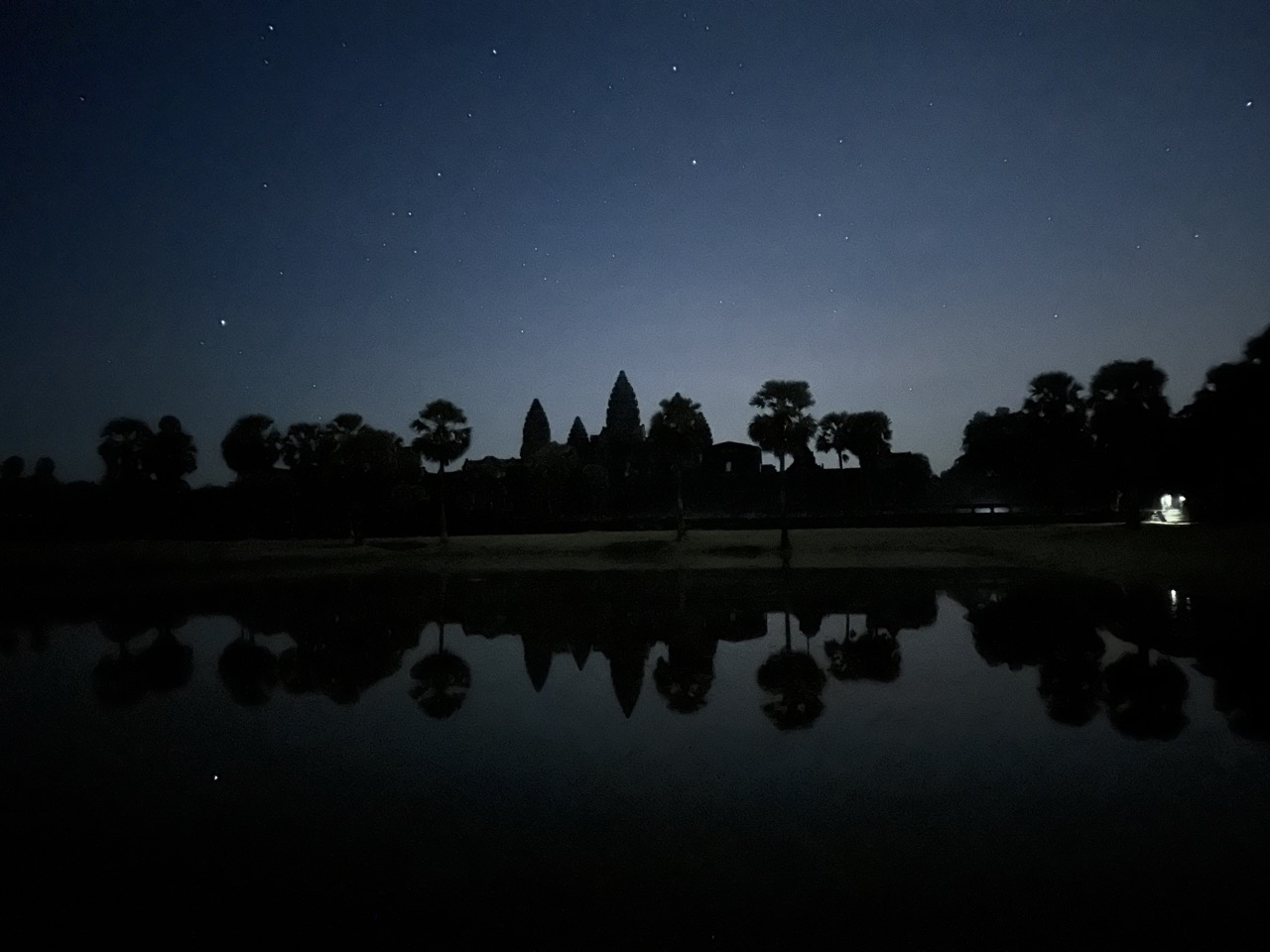
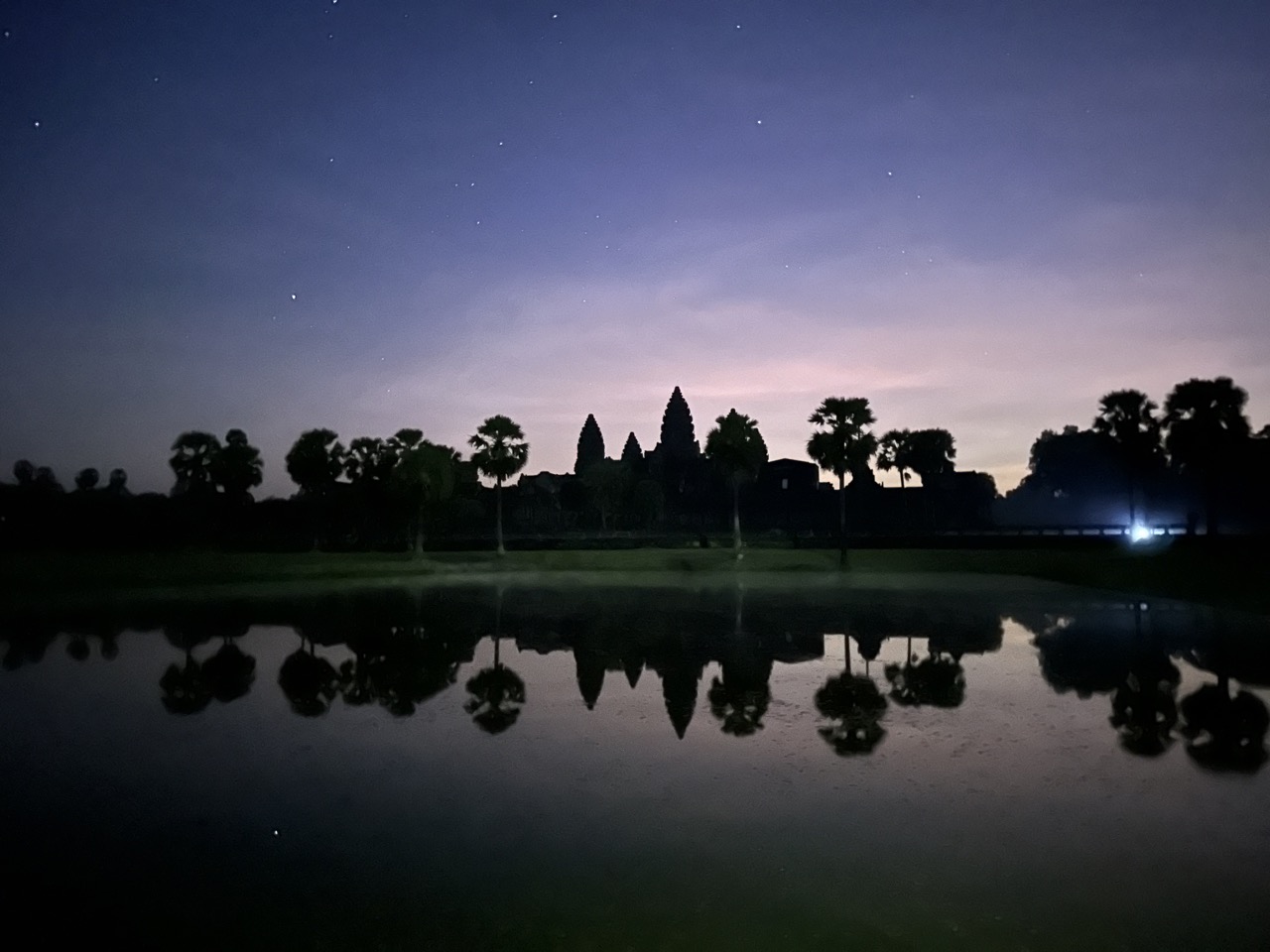
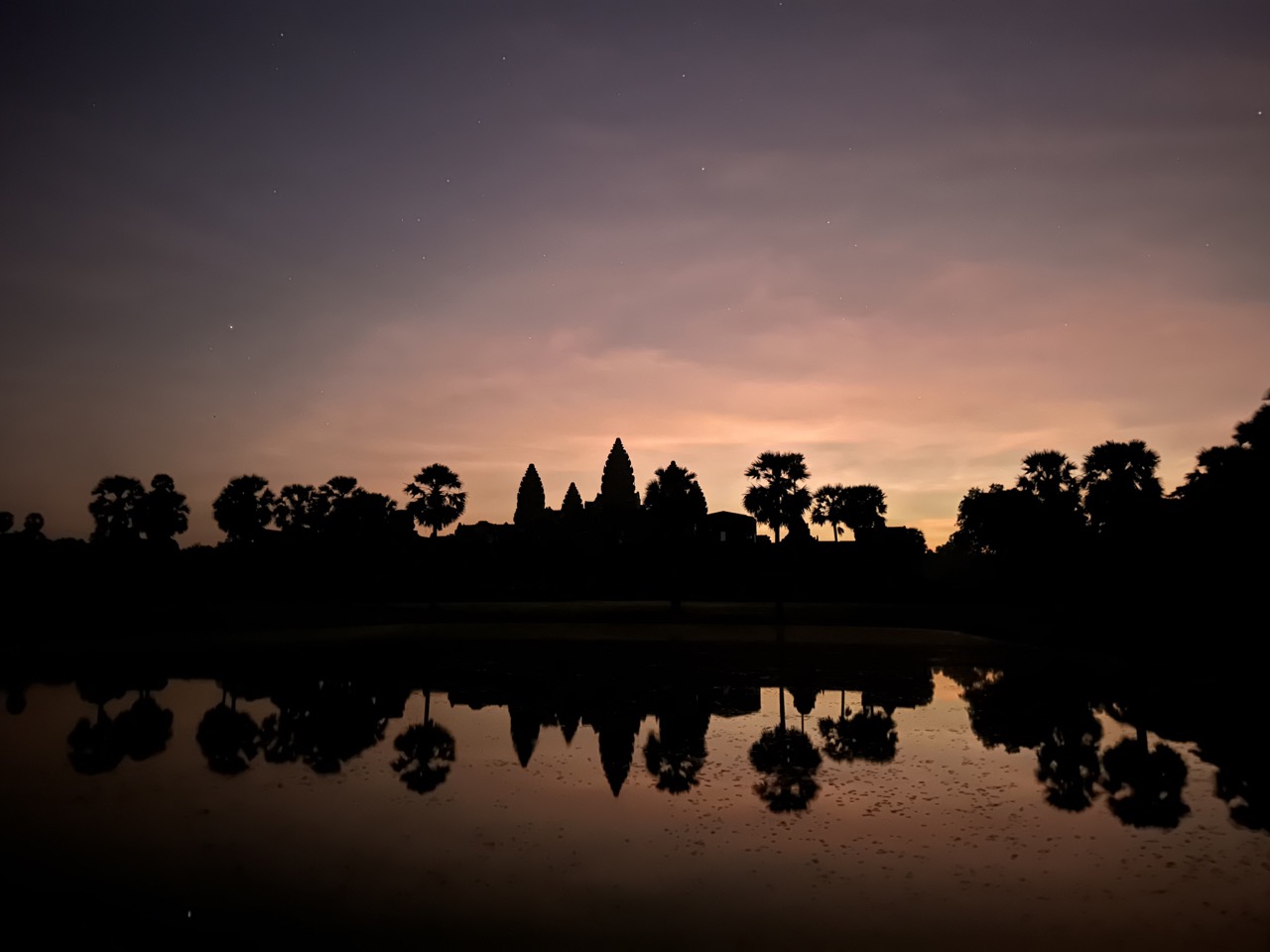
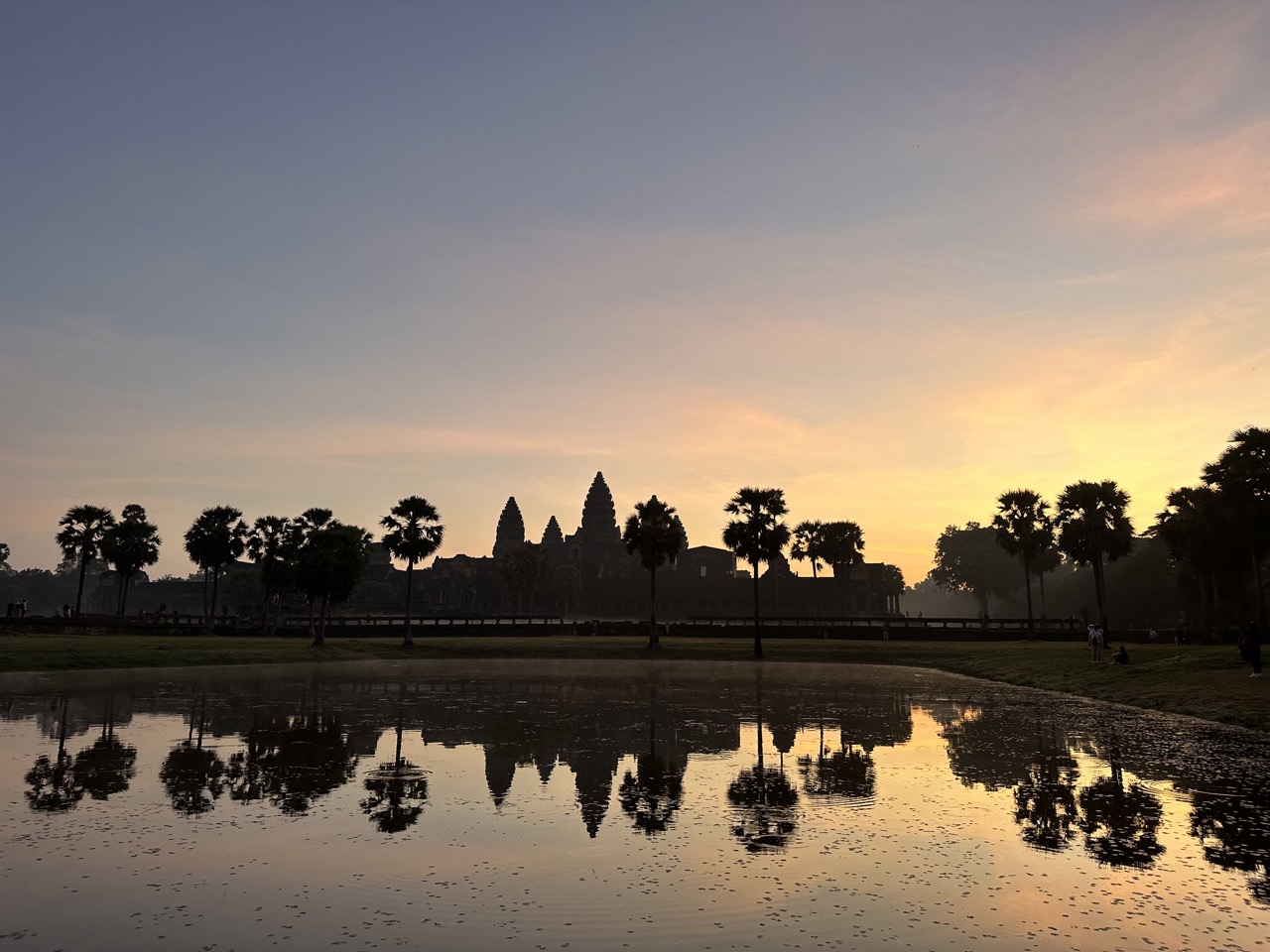
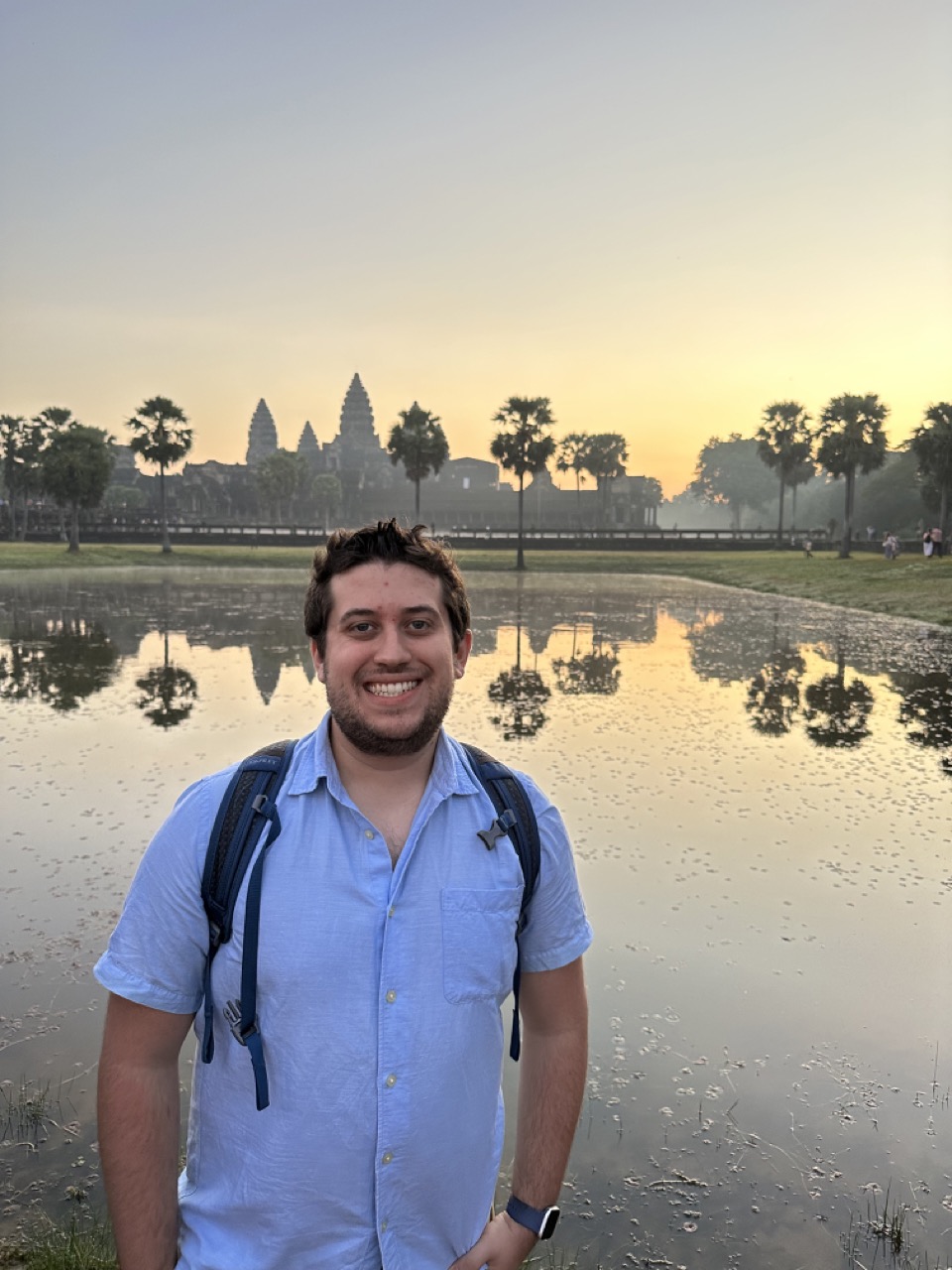
To say the view was stunning would be an understatement. After spending an hour admiring the facade and taking photos, we proceeded into Angkor Wat itself. I say almost because the king Suryavarman II who comissioned Angkor Wat died before the carvings were complete, and upon his death, the remaining work went unfinished. Arn explained the history of the carvings: he divided them into two categories, "not real history" (i.e. mythology), and "real history." The mythology depicted stories from Hindu mythology including the Battle of Lanka from the Ramayana and the Battle of Kurukshetra from the Mahabharata. A famous mural depicts the "Churning of the Sea of Milk", which looks a lot like tug of war (Arn claims that tug of war is recognized as the heritage of Cambodia). Some of the historical depictions include the Khmer soldiers battling against the Cham, who are a Muslim ethnic group in Cambodia. After examining the galleries along the perimeter I climbed to the very top of the central tower. The view is a little underwhelming: even though Angkor Wat is the tallest structure in Siem Reap, there is not much to see because of the expanse of jungle.
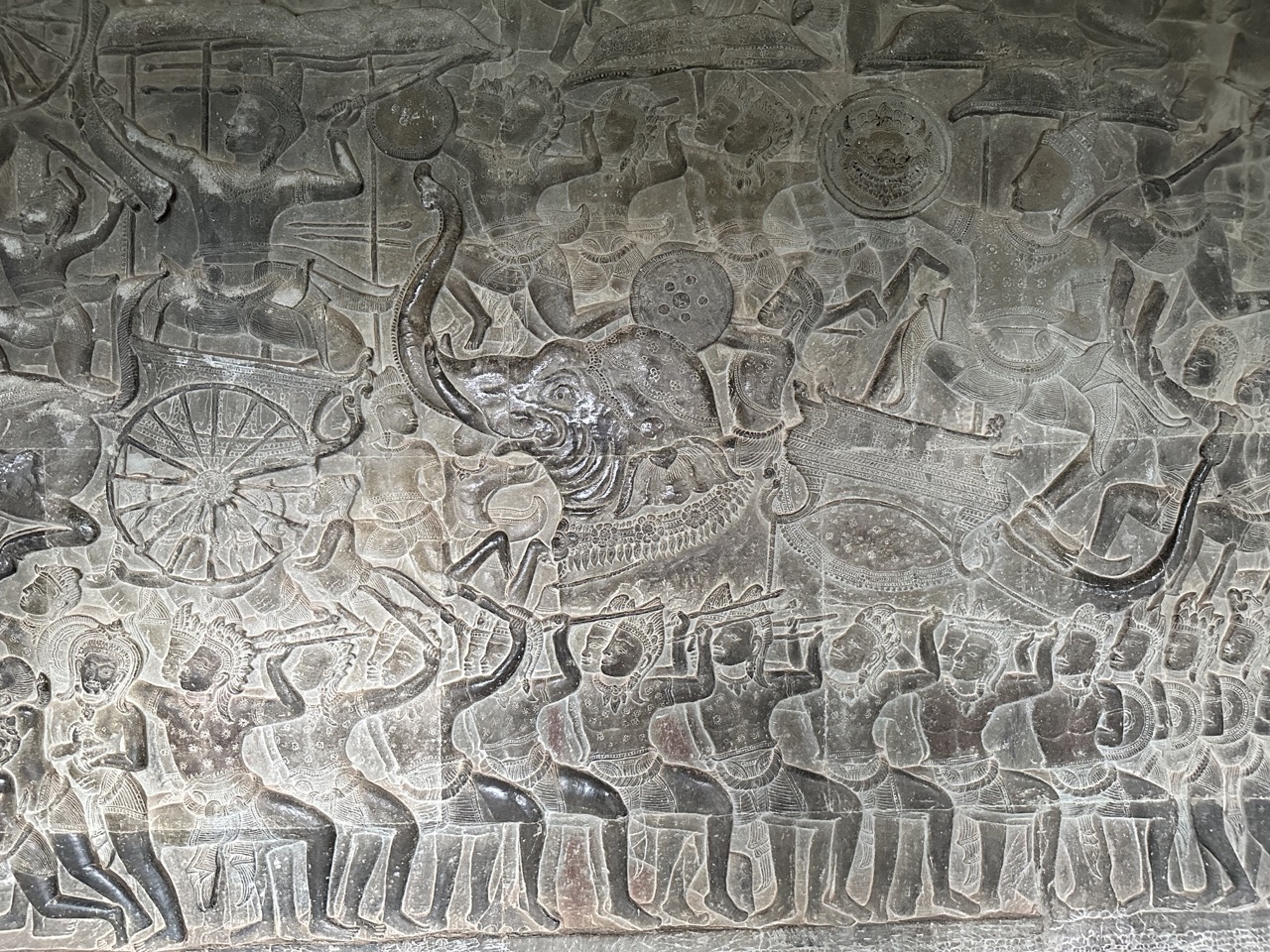
After leaving Angkor Wat, we proceeded to the south gate of Angkor Thom. Like Angkor Wat, Angkor Thom is surrounded by a moat, but unlike Angkor Wat, Angkor Thom is actually a city. The bridge across the moat contains more statues that depict the churning of the sea of milk, and there are four faces pointing in the cardinal directions atop the tower of the central gate: these could be seen as Brahma, the Hindu creator god, or as Avalokiteshvara, the Mahayana male boddhisattva. Arn claims that this is meant to show inclusion to both Hindus and Buddhists by Jayavarman VII, the king who converted to Mahayana Buddhism and built Angkor Thom.
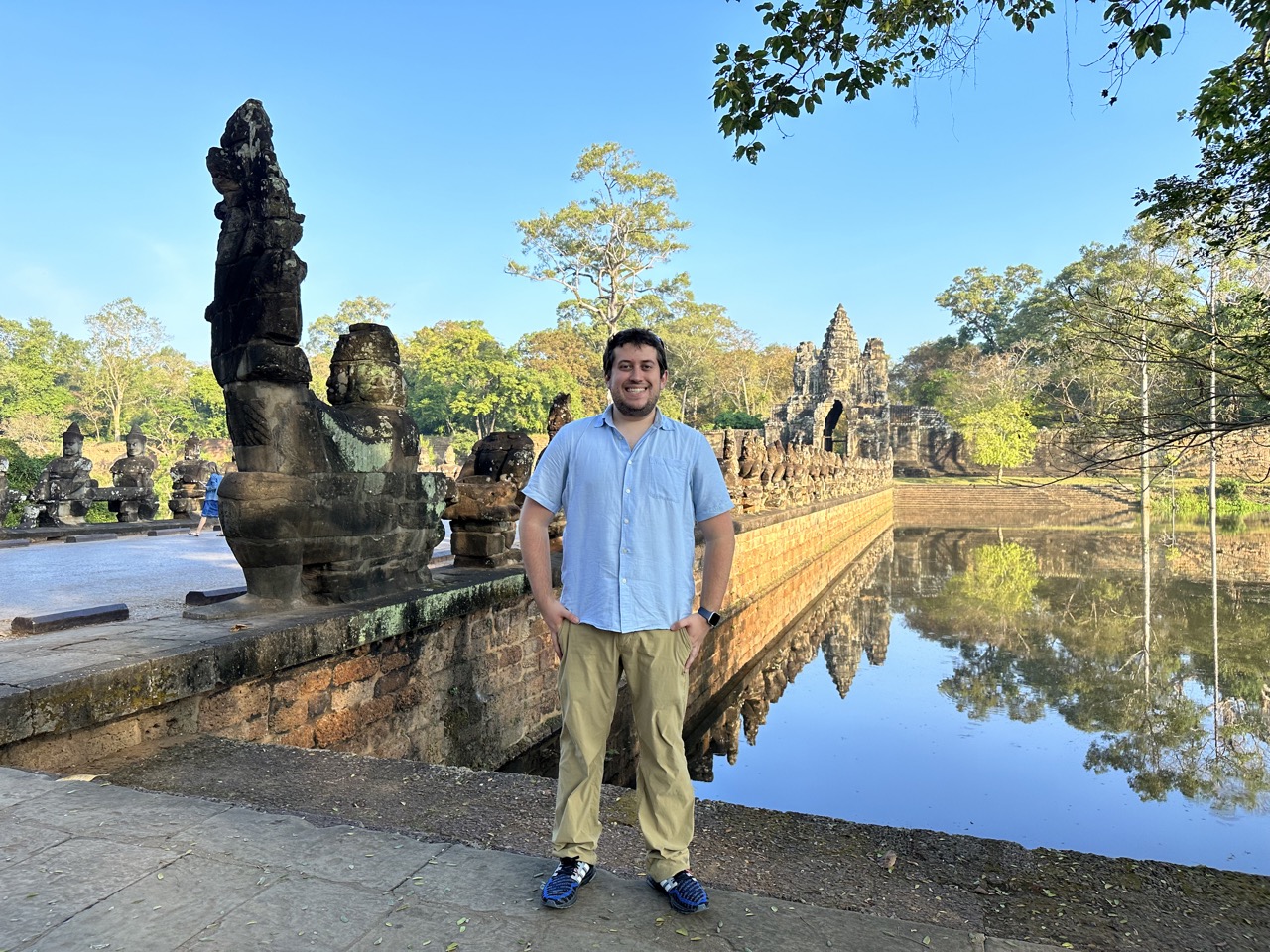
We proceeded to Bayon Temple, located in the center of Angkor Thom. Like the city itself, Bayon Temple was built by King Jayavarman VII as the state temple. The temple is not in as good condition as Ankogr Wat, built is interesting in its on right due to the large faces on every tower, just like the entrance to Angkor Thom. Just northwest of Bayon Temple is Baphuon Temple, built in the 11th century and dedicated to Shiva. After exiting Baphuon Temple we proceeded down the road to the Elephant Terrace, which is where the king would have met with his ministers to conduct important government business.
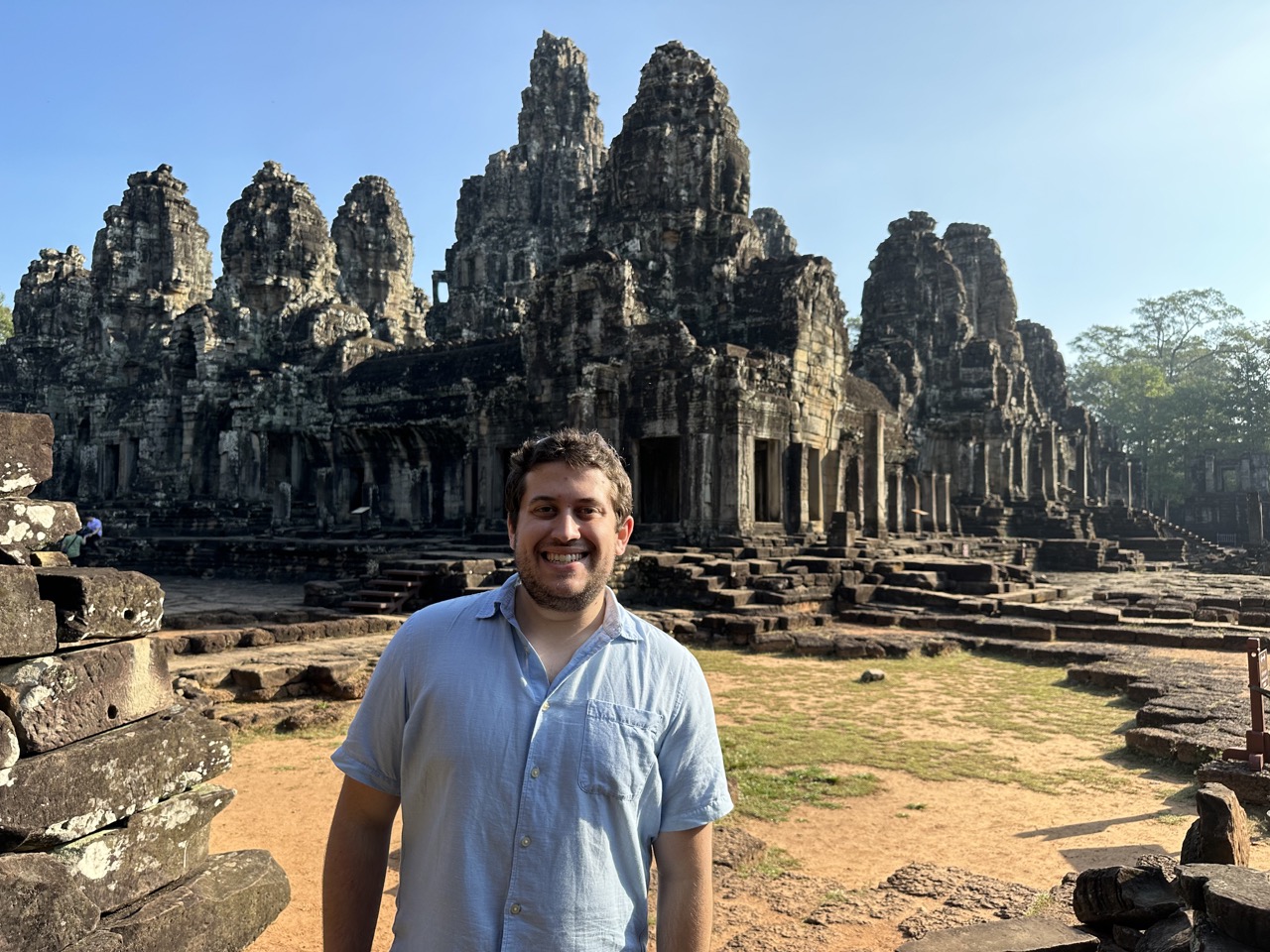
At this point it was around 9:30am and I hadn't eaten anything, so we stopped for what was supposed to be a snack that quickly turned into a full meal. In the vicinity of most temples in Angkor there are various stalls where people sell trinkets and clothing, and there is typically some kind of food stall. Near Angkor Thom there were a couple full restaurants in these stalls, so I sat down for an iced coffee and some spring rolls.
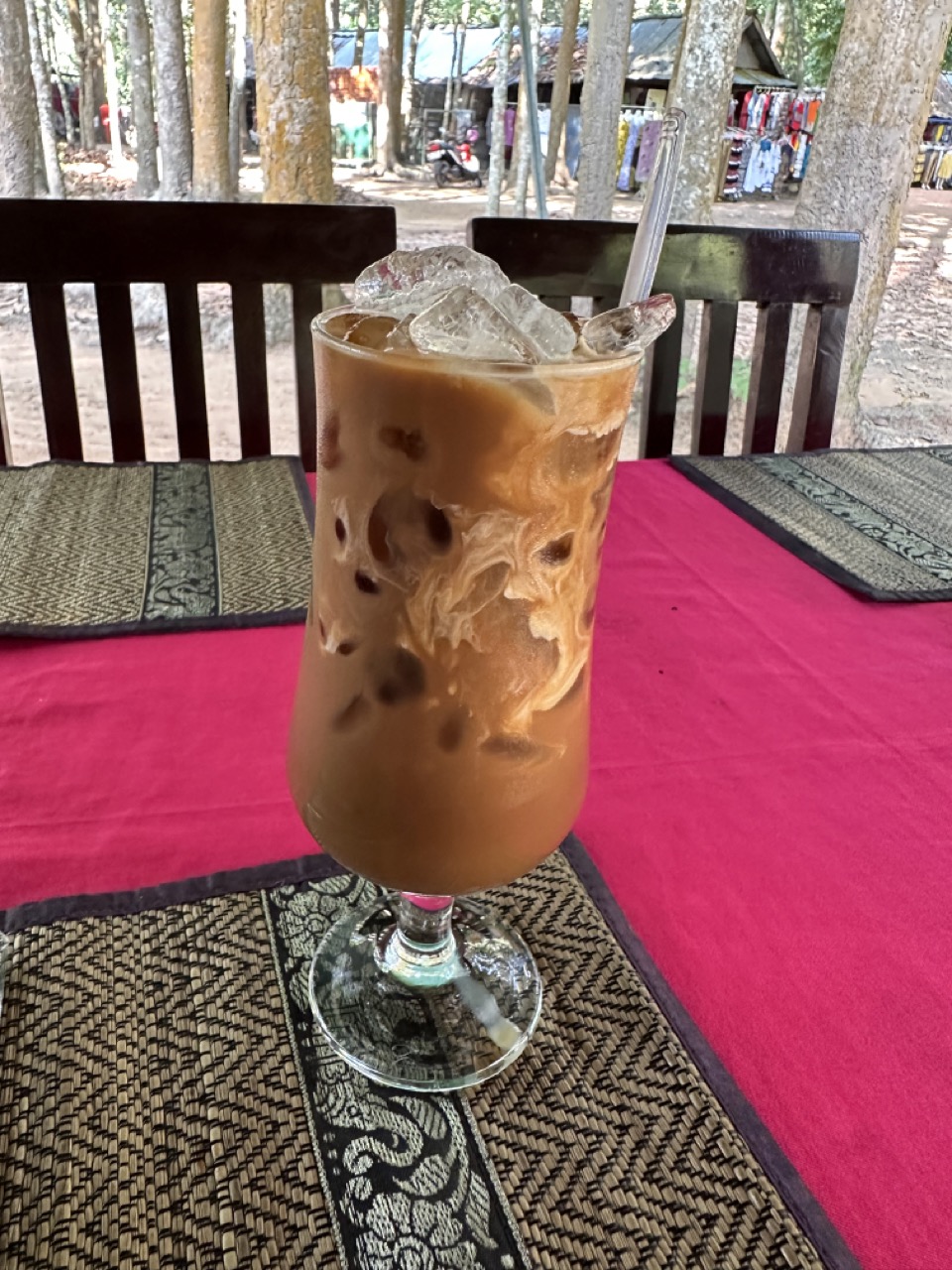
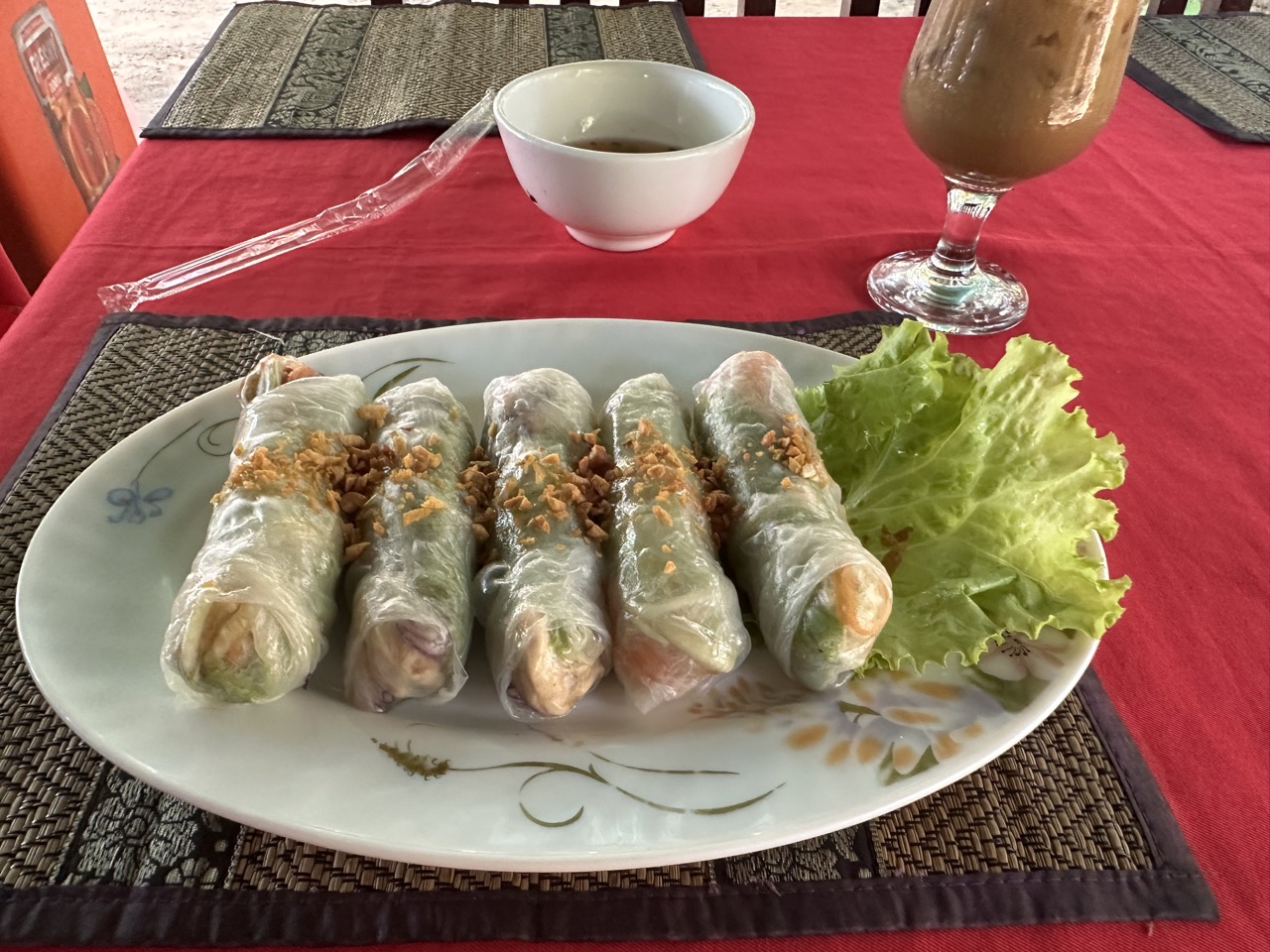
I was now re-energized after the coffee and food. At this point in the tour, Arn wanted me to ask him more questions, so I asked him to tell me about himself. He gave me his whole life story, which I believe to be one of the saddest life stories I have ever heard from someone I have met in person. I will try to summarize his story here.
Arn was only a little boy when the Khmer Rouge (the Cambodian communists) came to power. He was the youngest of eight children, but three of them died during the Khmer Rouge regime. His family tried to escape to Thailand, and made it all the way to the border, but his mother refused to cross because she was still waiting for one son to meet them, so the family stayed just on the Cambodian side of the border for many years until his mother died. They then proceeded to a refugee camp on the Thai side of the border. Arn has always been a teacher, because when he was growing up the education system was so poor, that it was typically the responsibility of the older students to teach the younger students (e.g. 12th graders teach the 10th graders, 10th graders teach the 8th graders, etc).
Eventually Arn got a job as a teacher, but it did not pay well enough for him to sustain his new family (he had a wife and four kids, although I believe his wife has passed away). His wife tried to open a restaurant. They took out a bank loan to buy land for a house and the restaurant. The restaurant was doing well, but then construction on a road made it too dusty and they ran out of customers. He went to Thailand to work illegally doing manual labor. Eventually, he was invited by a friend to come to Siem Reap to get a job which paid $120 a month. He was also invited to try to get a job as a tour guide, which he was able to get. The tour guide job on its own is not enough to make a living, at that time it only paid $20 per day and he could only work a couple of days per month.
When the pandemic began, the tourists all left, so he returned to Thailand to work in manual labor again. At the end of 2021, he returned to Siem Reap and found his house flooded and most of his possessions stolen. Being a tour guide now pays double what it once did, but tourism has yet to recover, and many tour guides are still only working a couple of days per month. Arn lives alone, his children scattered across Cambodia, some old enough to have children of their own. Despite all the hardships he has faced, Arn says that he is happy, and he just wants to find a path in life where he can make a living without causing harm to anybody in any way.
I realize this aside is a complete tonal shift but I feel it is important to share his story to get a good understanding of just how difficult life is for many Cambodians who had to live through decades of war and genocide.
Back to the tour of Angkor: Our next stop was Preah Khan Temple, which was built by Jayavarman VII in honor of his father. This temple is still largely unrestored, so there are lots of piles of stones all over the place. We next proceeded to Neak Poan, which is a small artificial island located in the center of a water reservoir. The belief is that this is a temple with medicinal properties, and the herbs growing with the water from the temple here can cure ailments. We next proceeded to Ta Som temple, which is believed to be dedicated to one of Jayavarman VII's teachers. Arn says that in the Khmer society, teachers are revered almost as much as parents.
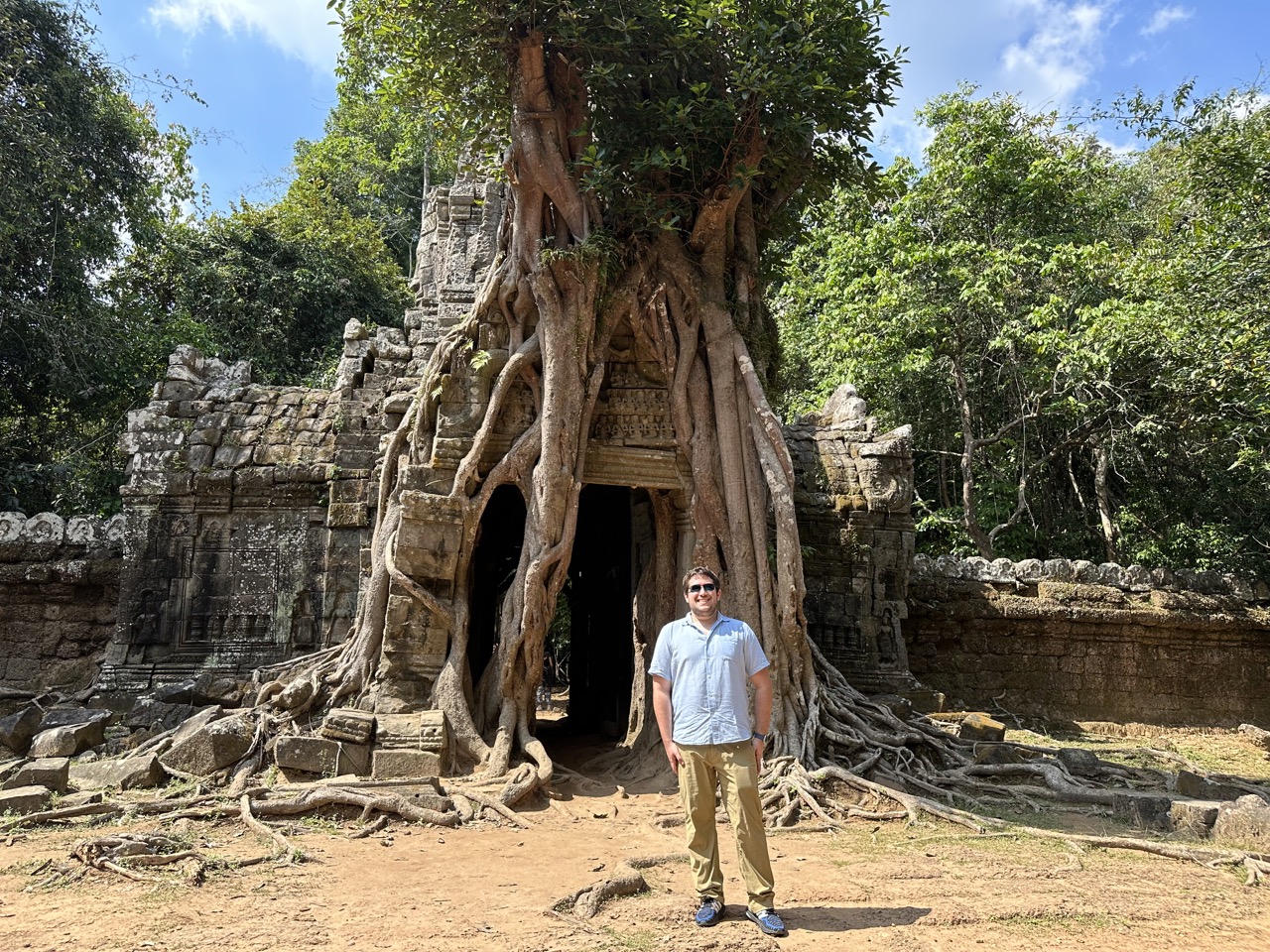
We next visited some of the oldest temples in Angkor, built in the 10th century. Temples like Angkor Wat were built with laterite on the inside and sandstone on the outside. The Laterite provides strength to the building, and the sandstone is small enough to carve into. The next series of temples were constructed before the Khmer figured out this building technique, so they instead had to build temples out of brick, then cover the brick with plaster, then carve into the plaster. As a result, much of the carvings are gone. Architecturally, these brick temples remind me a lot of those at Ayutthaya in Thailand, although I doubt the Cambodians would be happy to hear that comparison. The East Mebon temple was built by King Rajendravarman in honor of his parents, and dedicated to Shiva. To its south, Pre Rup was built as the state temple by Rajendravarman, and he intended for his ashes to be stored here.
Many of the temples in Angkor were built by kings to serve as their eventual mausoleums. This gives rise to the interesting fact that while most of the temples face with their entrances to the east, Angkor Wat faces with its entrance to the west, and this may be connected to the idea that it was built to serve as the King's mausoleum (related in my mind is the fact we learned recently on our trip to Egypt that east represents birth and west represents death, thus the Egyptians built temples on the east side of the Nile and tombs on the west side of the Nile).
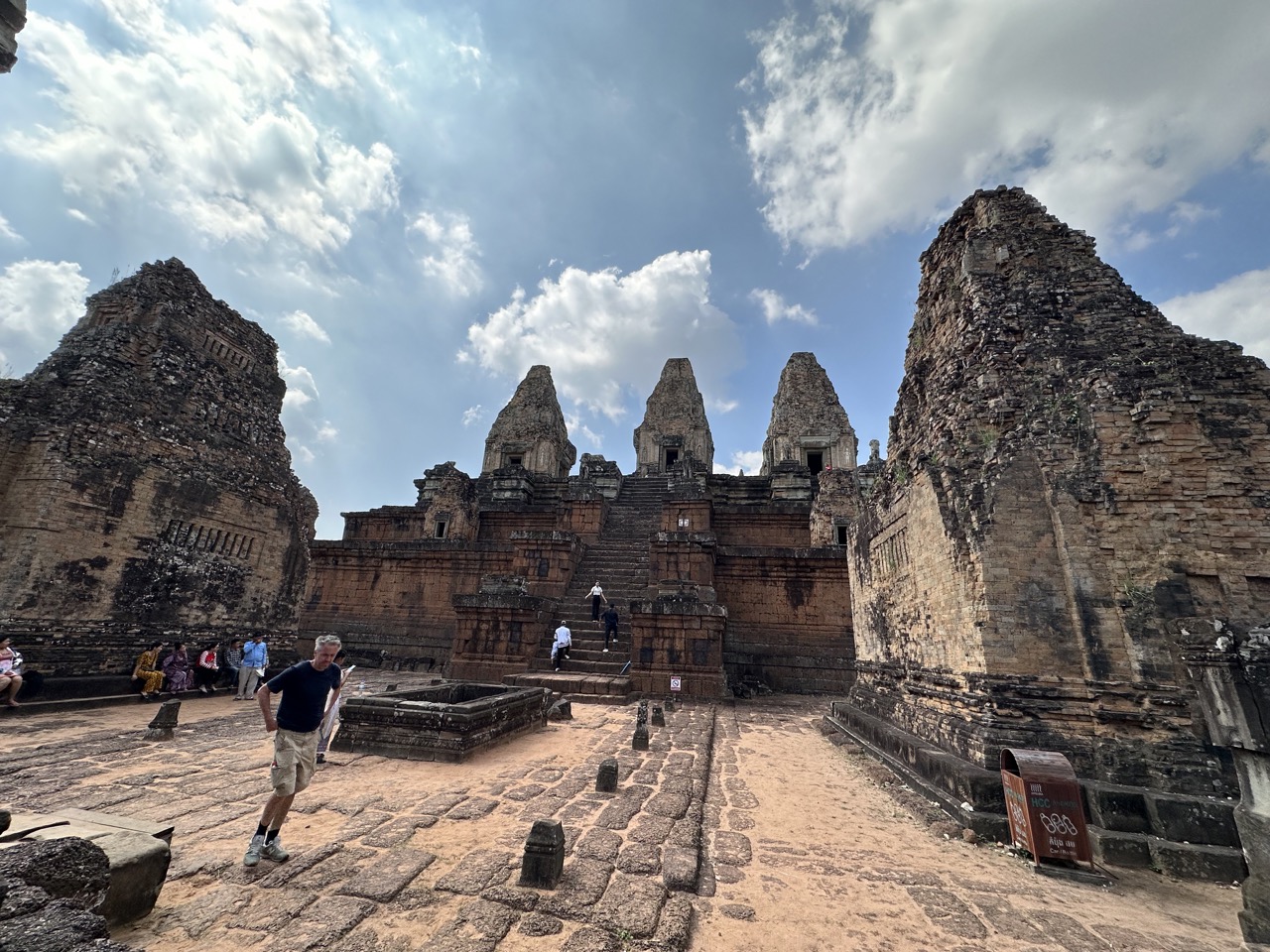
Our next stop was Ta Phrom temple, classified as one of the must see temples along with Angkor Wat and Bayon Temple. Ta Phrom temple is still overgrown with lots of trees, but the trees have not yet been removed. It was also the filming location for the 2001 Tomb Raider film with Angelina Jolie, so lots of tourists come to take photos in front of the trees that surround the stones of the temple. I haven't seen that movie but I still thought the temple looked really cool.
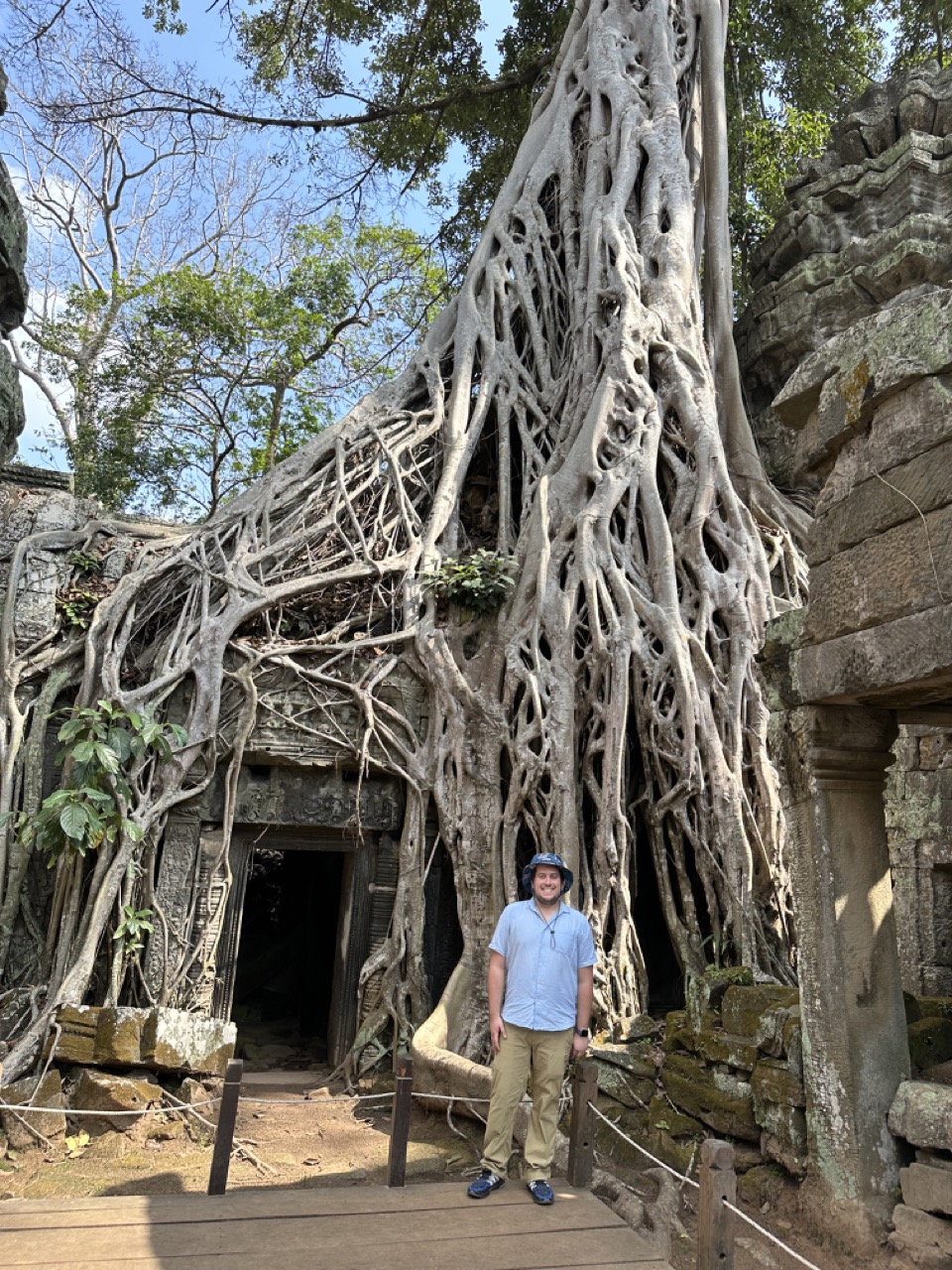
The final temple we visited was Banteay Kdei. By the time we made it there we had been touring for more than 8 hours and I was exhausted. This visit felt more like a calm walk in the woods. Since Arn and I did not talk much here, we were left to hear the music being played in the background, like at many other temples, by groups of handicapped amputees trying to raise money. Cambodia remains one of the most heavily land-mined countries in the world after the various 20th-century wars that took place there. At one point, there were more land-mines than people (of course, it doesn't help this statistic that it was around the same time that the Khmer Rouge committed genocide and killed a quarter to a third of the population). It is not uncommon for someone to stumble upon a live landmine and need to have a limb amputated, and the government does not do much to help victims of land mines, leaving them to try to raise money themselves, for example, by playing music in Angkor.
After departing Banteay Kdei, we drove back to the hotel. I said farewell to Arn and thanked him for spending the day with me and teaching me so much, and sharing so much about his life. He was with me for nearly 10 hours and the government-mandated fee is only $45, which feels pitifully low.
I was quite tired, but seeing as I had not eaten since those spring rolls at breakfast time, I walked around the Central Siem Reap area and crossed the River to get some food. I ended up at Sambo, a Khmer and Thai restaurant. I opted for a fresh lime juice cocktail and some pad siew.
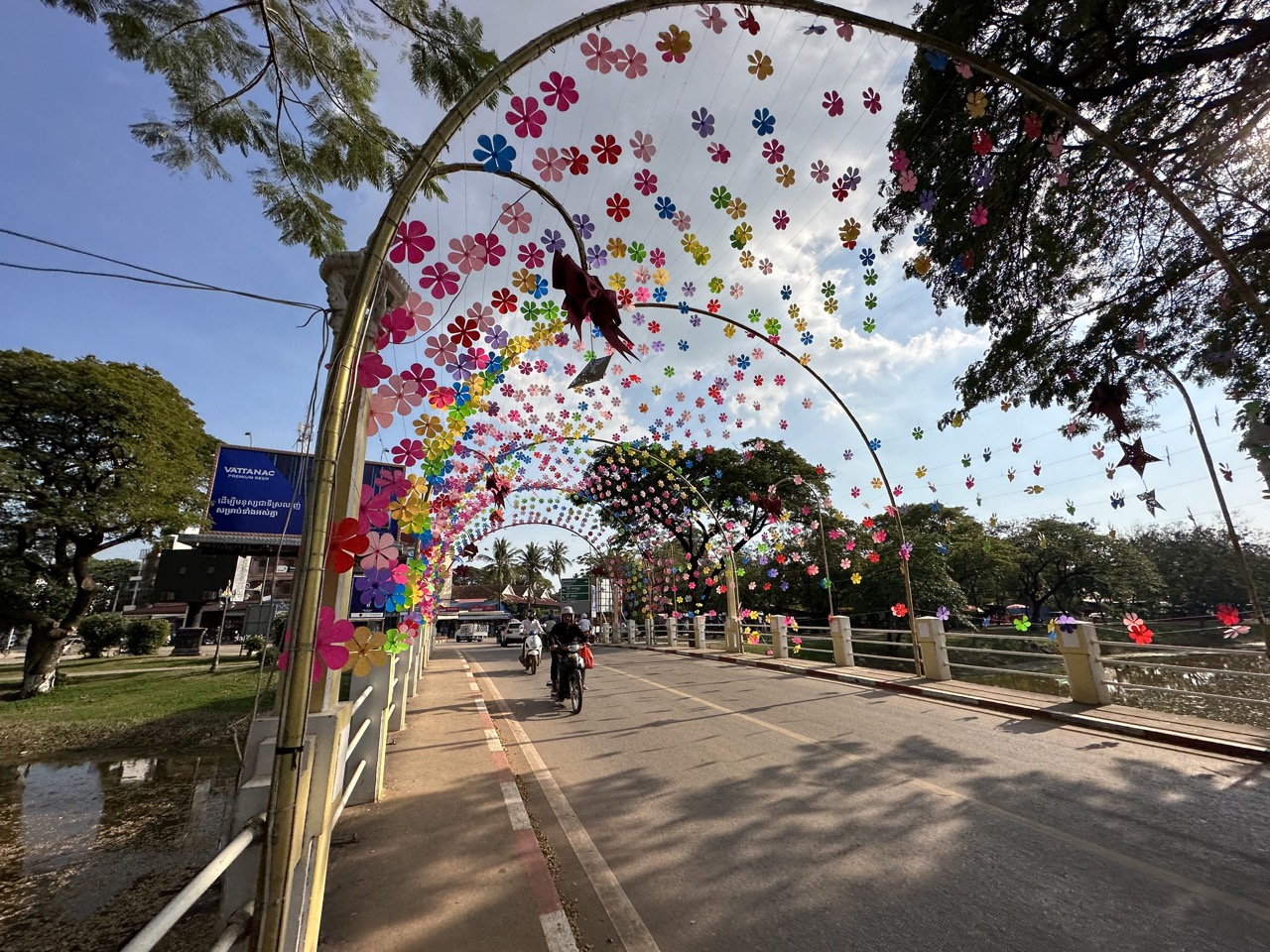
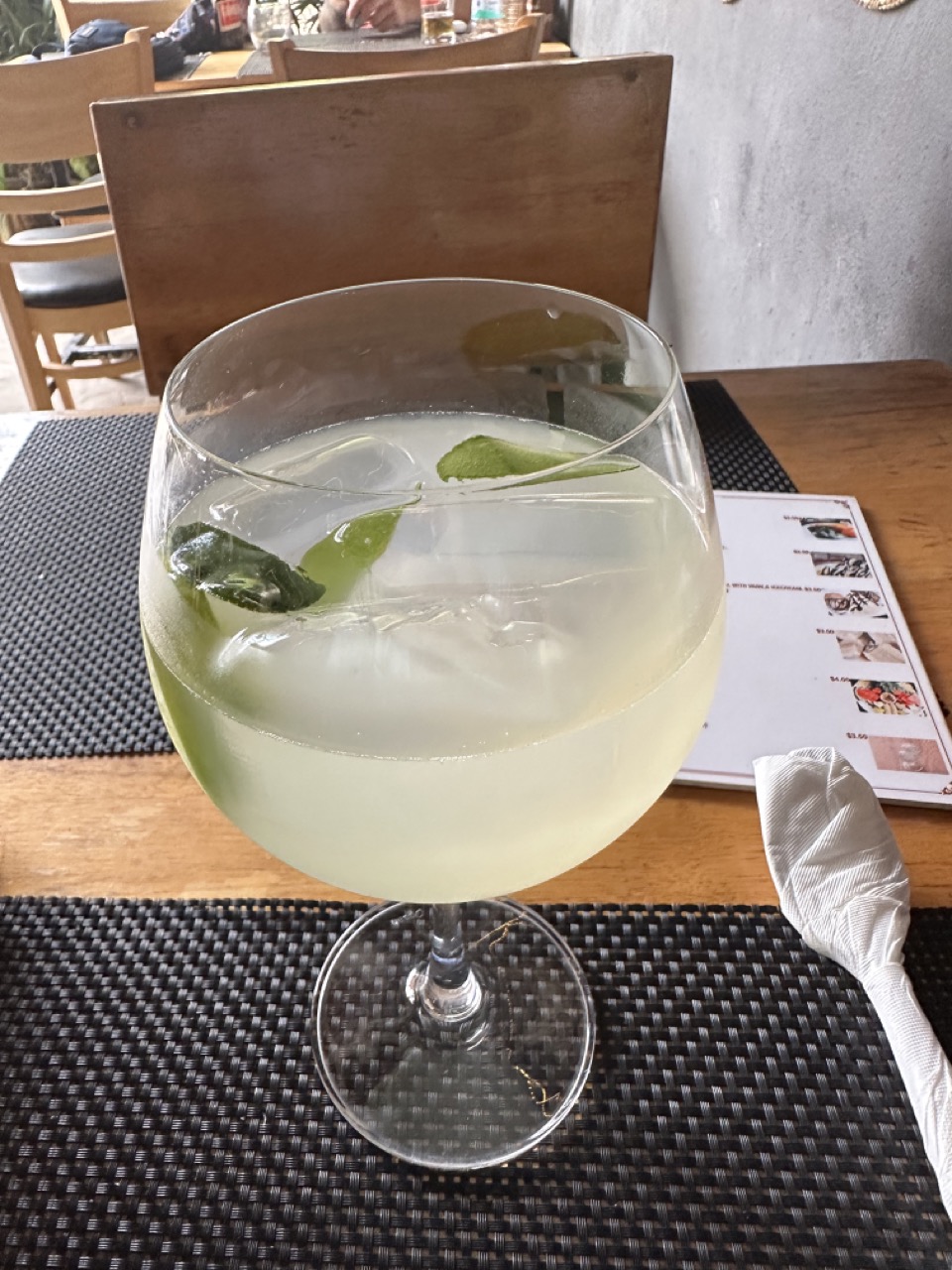
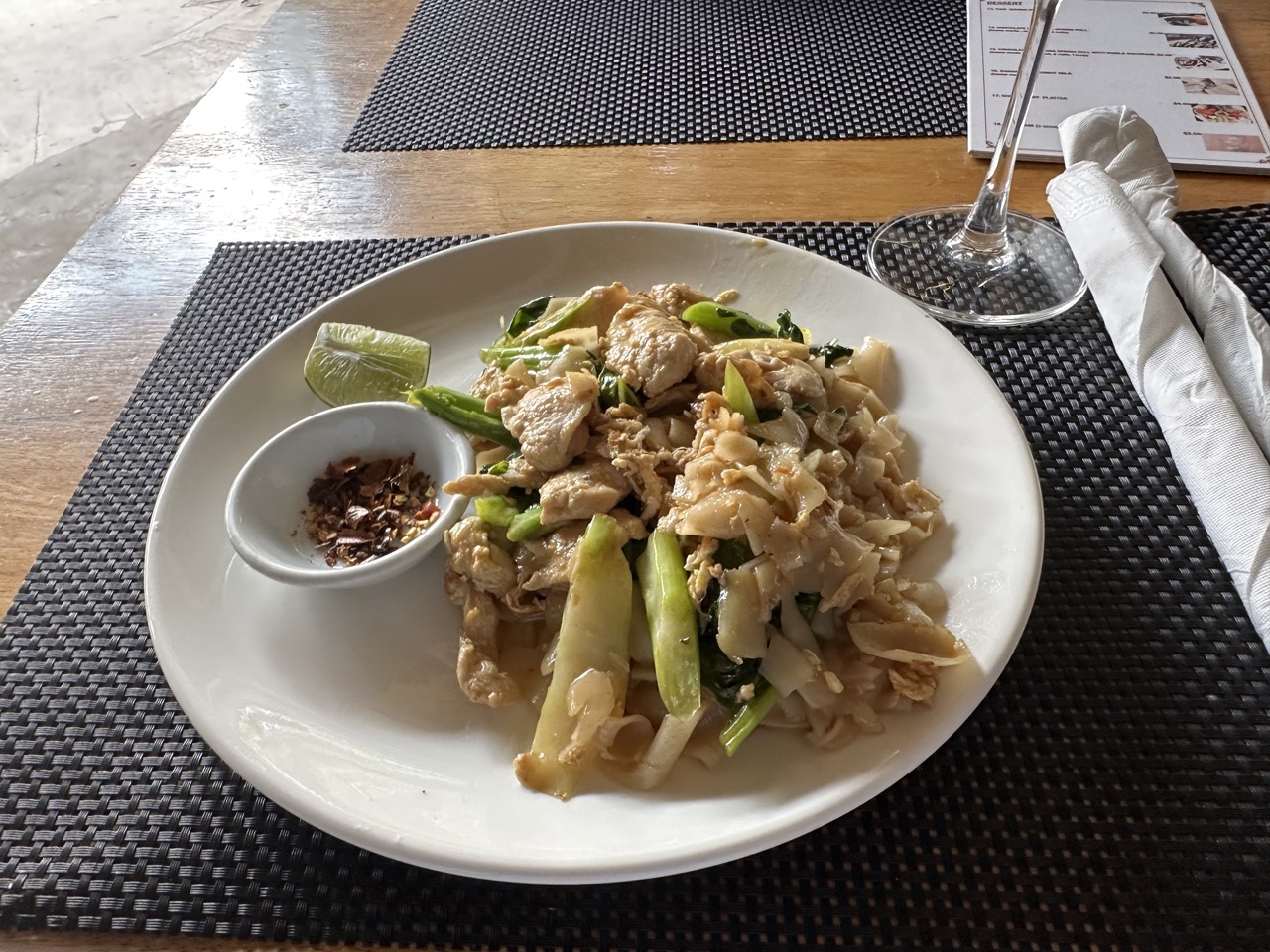
After my delicious lunch, I headed back to the hotel, and stopped to buy some iced coffee on the way. My idea was to spend a couple of hours relaxing and writing my blog, before going out to dinner somewhere near the hotel. However, I soon found myself completely asleep around 4pm for the second day in the row, and by the time I woke up, I figured most places would be closed and I might as well call it a night.
